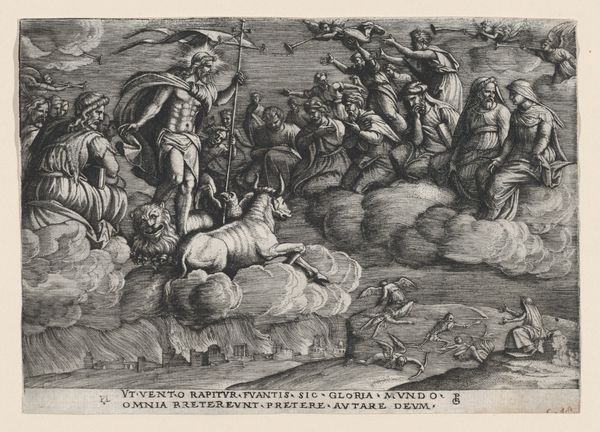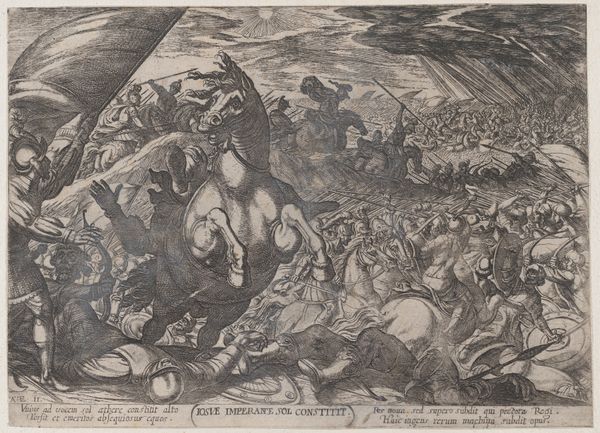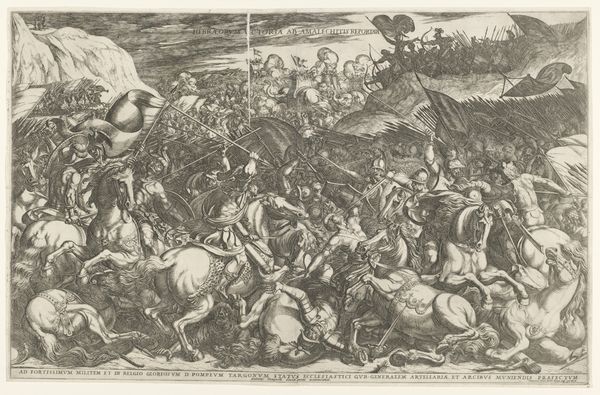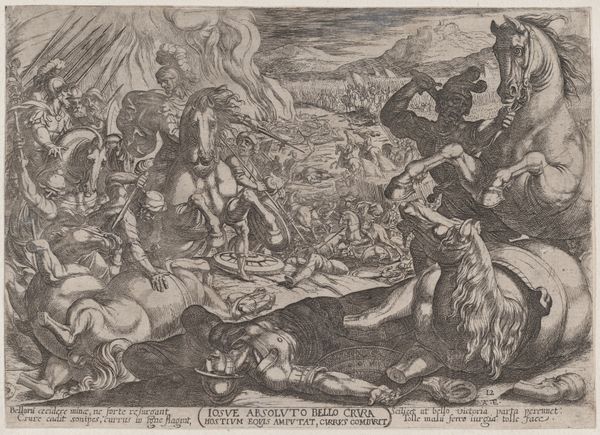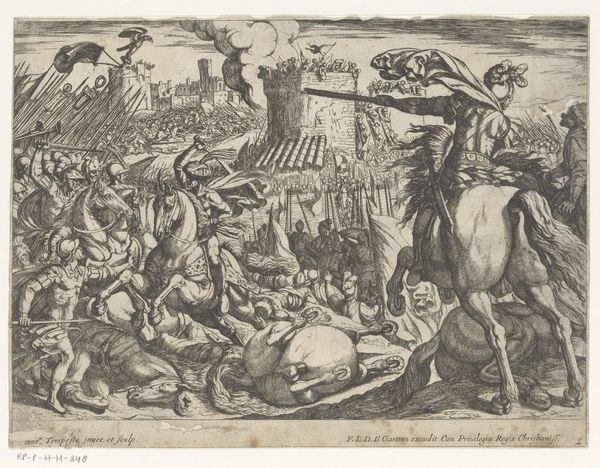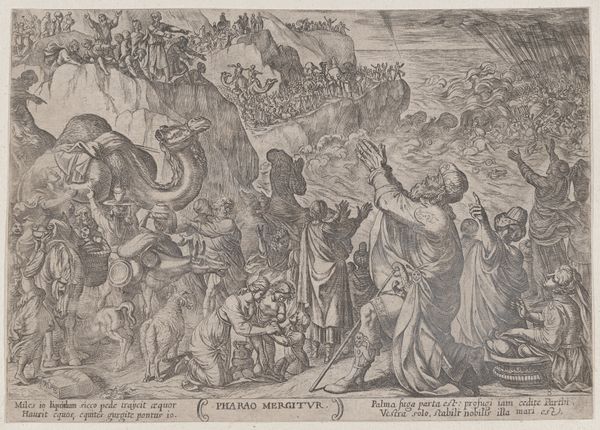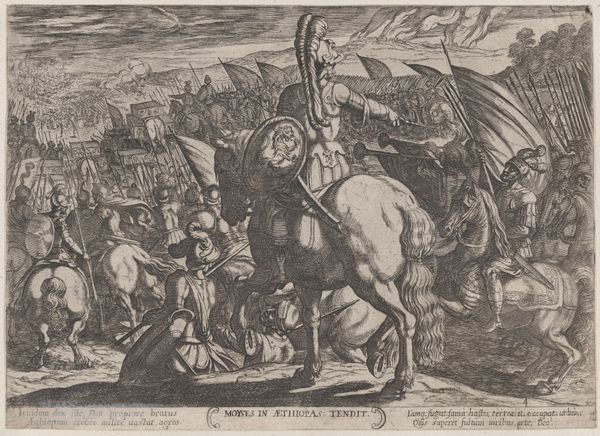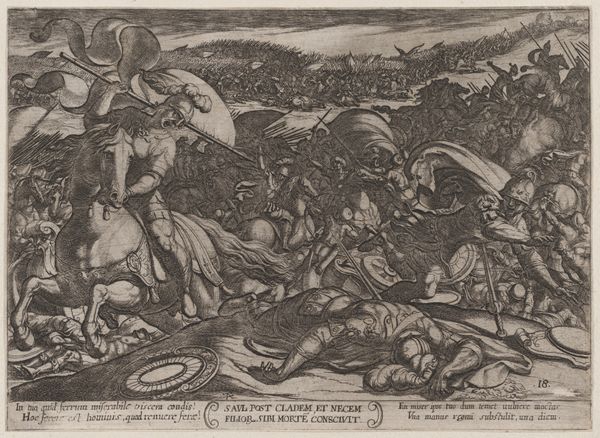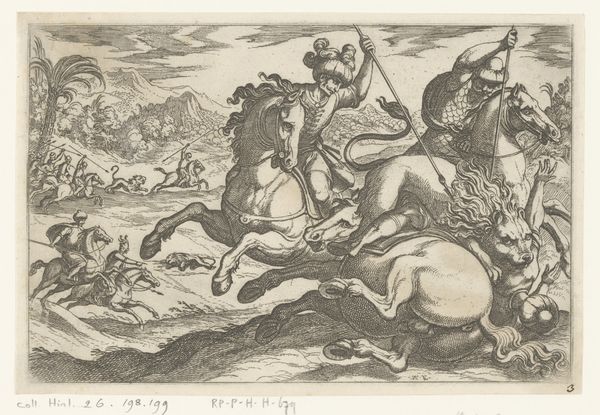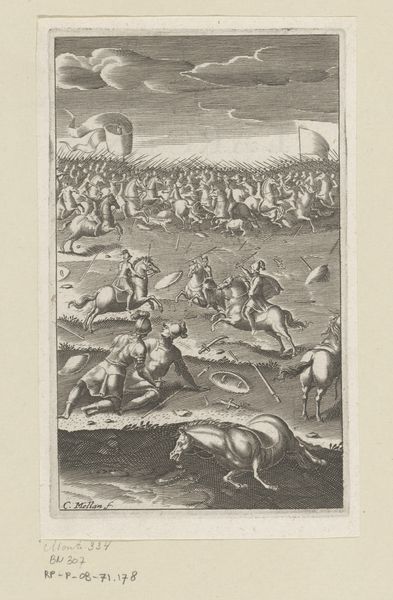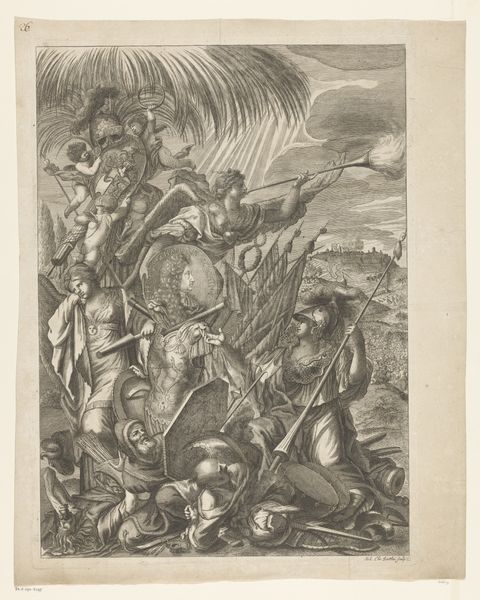
The Triumph of Death on Time, from The Triumph of Petrarch 1534 - 1544
0:00
0:00
drawing, print, engraving
#
drawing
# print
#
death
#
11_renaissance
#
arch
#
men
#
history-painting
#
engraving
Dimensions: Sheet: 5 7/8 × 8 1/4 in. (14.9 × 21 cm)
Copyright: Public Domain
Curator: Georg Pencz created this print, "The Triumph of Death on Time, from The Triumph of Petrarch," sometime between 1534 and 1544. The work currently resides here at the Met. It's an engraving on paper, showing a macabre procession. What strikes you first about it? Editor: The starkness of it all. It's like a scene pulled straight from a nightmare—death incarnate lording over utter destruction. All rendered in sharp lines, making it incredibly visceral. The tumbling bodies and collapsing forms are chaos in elegant miniature. Curator: Precisely. Pencz was a German Renaissance printmaker who was deeply influenced by Italian art and humanist thought. These “triumphs” were popular allegorical themes, depicting the victory of abstract concepts like Love, Chastity, Fame, and, in this case, Death and Time. They were often staged as elaborate processions during festivals. Editor: The skeleton with the scythe is obviously a classic representation of Death. But then, Time is riding a cart pulled by oxen and driven by… a cleric, or perhaps a judge? Is that commentary on institutions being subject to mortality as well? Curator: Absolutely, these aren’t haphazard choices. The oxen symbolize relentless, unstoppable force, representing Time marching forward. The figure on the cart is likely meant to show Time. It's important to remember the context—the Reformation, societal upheaval, and a renewed focus on humanism that questioned traditional authority. Editor: It's all a potent cocktail. A visual memento mori. The burning city on the right contrasting with the figures moving off to the top left and the symbolic arch further central. There's so much traditional iconography blended together, it really packs an allegorical punch. Even the Latin inscription is foreboding... Curator: "From the origin depends the end, we die as we are born. Whether far or near, his death awaits everyone". It serves as a reminder of the fleeting nature of life, something always resonant, but particularly so during times of social change. Editor: Looking at it now, knowing that context makes it even more disturbing—the visual reminder that death makes all power and ambition worthless. Curator: The layered symbolism allows this piece to retain its emotional and intellectual bite even after centuries. Editor: A stark reminder that even triumphal displays cannot escape the ultimate leveller: Death.
Comments
No comments
Be the first to comment and join the conversation on the ultimate creative platform.
